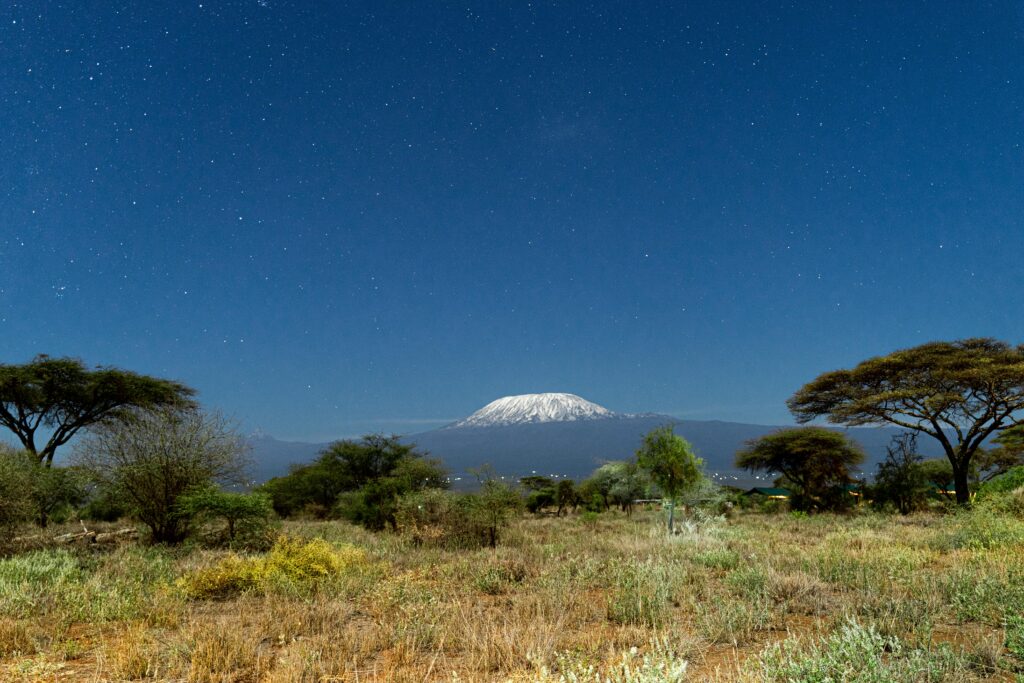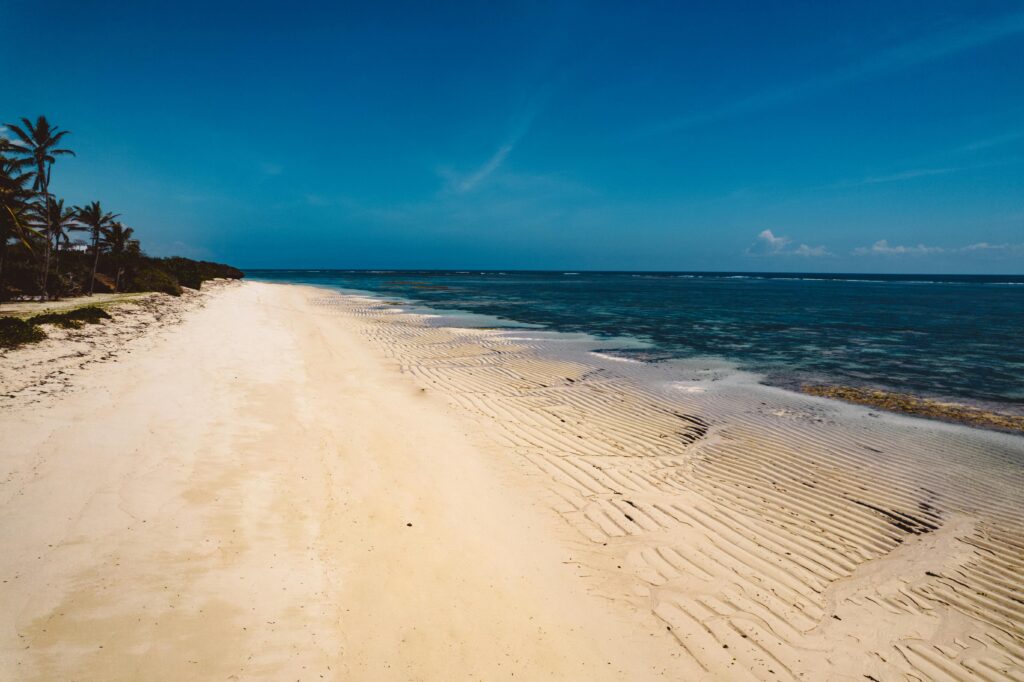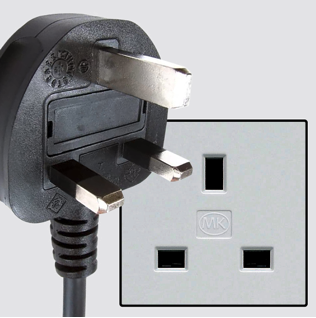Kenya / Jamhuri ya Kenya – Let’s explore here

What’s it like in Kenya?
Kenya is a beautiful, landlocked country in central Africa, dominated by the Great Rift Valley, which runs north – south. Mount Kenya, Kenya’s highest mountain, and Africa‘s second highest mountain, lies in the Kenyan highlands in the south-centre. The mountain is 17,057 ft (5,199 m) above sea level.
It has a very long history, with early hominid remains abundant throughout the country. It shares land borders with Ethiopia, Somalia, South Sudan, Tanzania and Uganda.
Kenya is slightly larger than France, and its population is around 52½ million people (2024), about one in ten of whom live in the metropolitan area of the capital, Nairobi. Kenya has a very young population with almost ¾ of its citizens being under the age of 30 years.

A bit about the history of Kenya
Early History and Indigenous Societies
Kenya has a long history of human habitation, with evidence of early human activity dating back millions of years. The region was home to various ethnic groups, including the Kikuyu, Luo, Maasai, Luhya and Kalenjin, each with distinct languages, cultures and social structures. These communities engaged in farming, pastoralism and trade, particularly along the Indian Ocean coast.
Arab and European Influence
From the 8th century, Arab traders, followed by Persians, established trading posts along the Kenyan coast, contributing to the spread of Islam and the development of coastal Swahili culture. The arrival of Portuguese explorers in the 16th century marked the beginning of European interest in the region. In the 19th century, British colonial interests expanded into Kenya, leading to the establishment of a protectorate in 1895.
British Colonisation and the Mau Mau Uprising
Kenya became a colony of the British Empire in 1920. The British sought to develop the land for agriculture, particularly settler farming, which displaced many indigenous communities. This exploitation led to growing resentment, culminating in the Mau Mau Uprising (1952–1960), a violent rebellion by the Kikuyu people against British rule. The British responded with a harsh crackdown, including mass arrests and the construction of detention camps.
Path to Independence
The Mau Mau Uprising played a significant role in accelerating Kenya’s path to independence. Following years of political pressure, the British government began to negotiate with Kenyan leaders, leading to the country’s independence. On 12 December 1963, Kenya became an independent nation, with Jomo Kenyatta, leader of the Kenya African National Union (KANU), becoming its first president.
The Kenyatta Era
Kenyatta’s presidency marked the beginning of an era of political consolidation, with KANU becoming the dominant political force. Although Kenya initially experienced relative stability and economic growth, political dissent was suppressed, and the country became a de facto one-party state. Kenyatta’s government favoured the Kikuyu ethnic group, which led to growing inequality and tension with other communities. Jomo Kenyatta died in 1978, and his vice-president, Daniel arap Moi, succeeded him.
The Moi Era
Daniel arap Moi’s presidency lasted for 24 years, during which Kenya was characterised by authoritarian rule, political repression and corruption. In 1982, there was an attempted coup, but it was quickly suppressed. In the late 1980s, pressure from civil society and international organisations forced Moi to allow limited political reforms, leading to the reintroduction of multi-party politics in 1991. However, political violence, human rights abuses and economic challenges persisted throughout Moi’s tenure.
The Kibaki Era
In 2002, Kenya transitioned to a more democratic system with the election of Mwai Kibaki, who replaced Moi as president. Kibaki’s administration focused on economic reform, infrastructural development and improving governance. However, his second term was marred by widespread corruption, poor governance, and the aftermath of the disputed 2007 elections. The violence following the 2007 election led to more than 1,000 deaths and the displacement of hundreds of thousands.
The Post-Election Crisis and the 2010 Constitution
The 2007 election violence prompted significant reforms, including a power sharing agreement between Kibaki and opposition leader Raila Odinga. In 2010, Kenya adopted a new constitution, which aimed to decentralise power, improve the rule of law and strengthen democratic institutions. The constitution also provided for the creation of a more representative government, including the establishment of a devolved system with county governments.
The Kenyatta Presidency
In 2013, Uhuru Kenyatta, son of Jomo Kenyatta, was elected president in a contested election. His presidency focused on economic development, infrastructural projects such as the Standard Gauge Railway, and regional security, particularly in Somalia. However, his administration faced challenges, including corruption scandals, tensions over land rights and issues related to ethnic divisions. In the 2017 election, Kenyatta was re-elected amid allegations of electoral fraud and a boycott by opposition leader Raila Odinga. The election led to further political instability, but Kenyatta and Odinga reached a historic reconciliation in 2018, which helped reduce political tensions.
The 2022 Election and New Leadership
In 2022, Kenya held another presidential election, with Uhuru Kenyatta unable to run due to constitutional term limits. The contest was between William Ruto, the deputy president, and Raila Odinga. After a fiercely contested election, William Ruto emerged victorious, and he was inaugurated as the 5th president of Kenya in September 2022. William Ruto’s administration has focused on economic reforms, with particular emphasis on addressing food insecurity, improving infrastructure and combating corruption. However, Kenya continues to face challenges, including high levels of debt, unemployment, and political divisions. Additionally, the country is grappling with the effects of climate change, including droughts and floods.

Kenya road trip
Our Kenyan road trip is part of a much larger African road trip.
Map of our road trip through Kenya

Our current planned Kenyan road trip takes us from Uganda towards the capital, Nairobi, before moving north onto Ethiopia.
No doubt we’ll explore the country much more than this continent-spanning short route shows, in particular checking out the capital and the Kenyan highlands.
Hopefully our journey will improve our knowledge of this intriguing and beautiful country, and enable us to meet some interesting people. We’ll be updating this page at that time – don’t forget to check back 🙂
What’s it like to drive in Kenya?
They drive on the left hand side of the road in Kenya. In the main, roads are poor, with many being unsurfaced dirt tracks. Driving standards are also poor.
Do you require an international driving permit in Kenya?
We’ve created a dedicated page to driving abroad, which answers this question, and more, which you might find helpful.
Can you use your UK driving license when driving through Kenya?
We’ve created a dedicated page to driving abroad, which answers this question, and more, which you might find helpful.
Do I need a carnet de passages to drive in Kenya?
A Carnet de Passages is required to overland in Kenya. We’ve created a dedicated page to driving abroad, which answers this question, and more, which you might find helpful.
What currency do they use in Kenya?
In Kenya they use the Kenyan shilling. Cash is widely used. The use of credit / debit cards becoming more widely accepted outside of the capital and tourist areas. Travellers cheques are not readily accepted. There are some ATMs in cities throughout the country.
You should make yourself aware of the amount that your bank charges you for using credit and debit cards abroad. Often credit cards are cheaper for purchasing items directly, and for withdrawing cash from ATMs.
What language do they speak in Kenya?
They mainly speak Swahili, Kikuyu and Luhya in Kenya. Although English is also an official language, and is spoken widely.
What time zone is Kenya in?
Remember, when you’re planning your next trip to take a look at what time zone it’s in.
Do I need a visa to visit Kenya?
We’ve created a dedicated, more comprehensive page on visas, which you should find helpful. Check it out!
Is wild camping legal in Kenya?
Yes, wild camping is fine in Kenya.
What plug / socket type do they use in Kenya?

In Kenya they use plug / socket type G.
Health issues in Kenya
Is it safe to drink water in Kenya?
No, it is not safe to drink tap water in Kenya. Bottled water is readily available throughout the country.
What vaccinations are required for Kenya?
This NHS website is kept up to date with all relevant information on vaccinations in Kenya.
Phones in Kenya
What is the country calling code for Kenya?
The country calling code for Burkina Faso is +254
What are the emergency phone numbers in Kenya?
- The emergency number for police in Kenya is: 112 / 911 / 999
- In Kenya, the emergency number for ambulance is: 112 / 911 / 999
- The emergency number for fire in Kenya is: 18112 / 911 / 999
If you’ve got some useful info that you’d like to share, let us know!
And don’t forget to check out all the other pictures!
